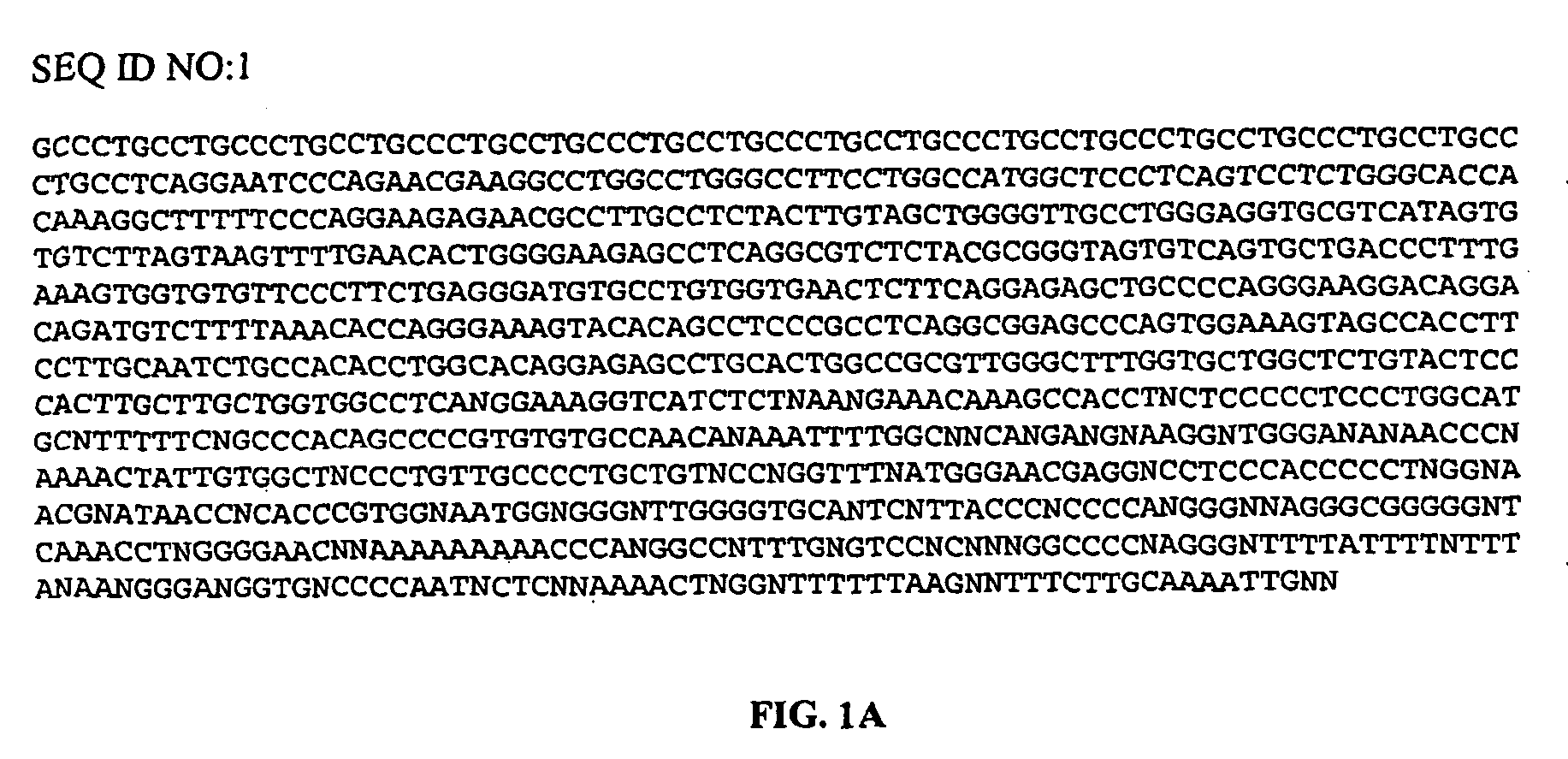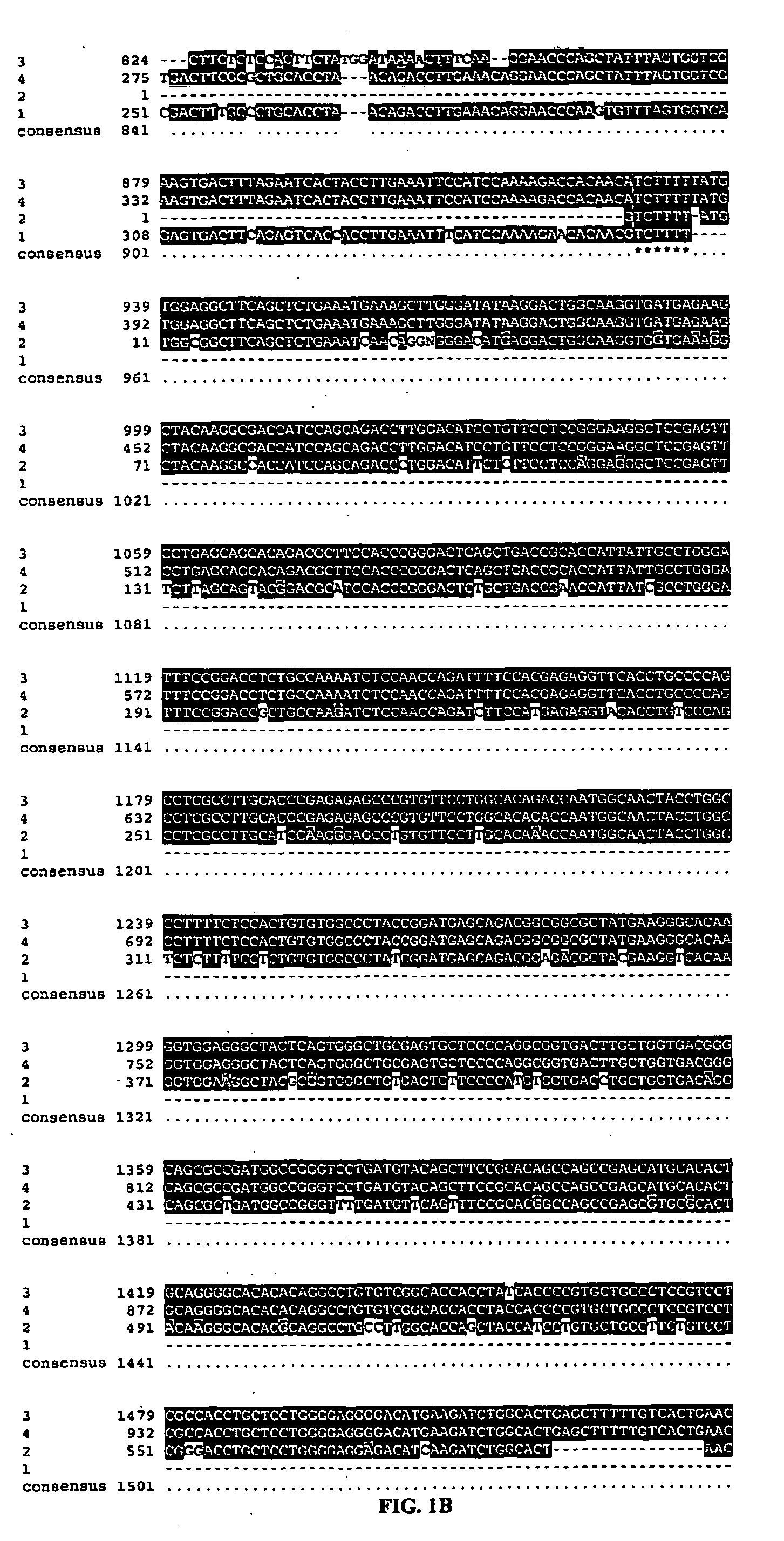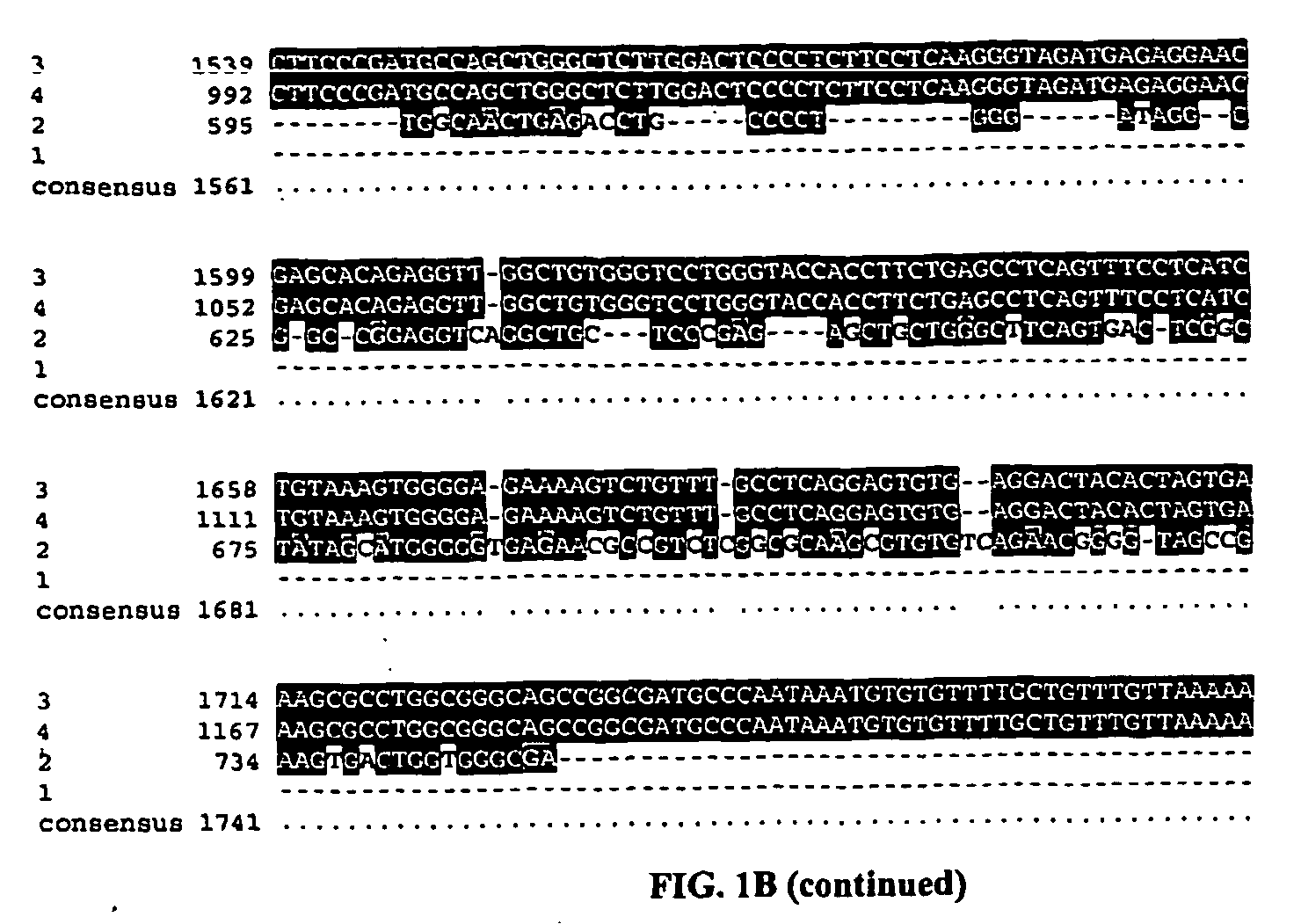Mammalian genes involved in rapamycin resistance and tumorgenesis: rapr6 genes
a technology of rapamycin resistance and genes, applied in the field of rapr6 genes, can solve the problems of insufficient knowledge of upstream or downstream constituents of pathways, severe side effects of late immunosuppressants, etc., and achieve the effect of regulating rapamycin resistance and diagnosing rapamycin resistan
- Summary
- Abstract
- Description
- Claims
- Application Information
AI Technical Summary
Benefits of technology
Problems solved by technology
Method used
Image
Examples
Embodiment Construction
[0047] The invention provides nucleotide sequence of a novel mammalian gene, the RapR6 gene, which is involved in rapamycin resistance and tumorgenesis, and amino acid sequences of the encoded proteins, and derivatives and analogs thereof. The invention provides derivatives and analogs of a protein encoded by the RapR6 gene. The invention provides fragments (and derivatives and analogs thereof) of a protein encoded by the RapR6 gene. The invention also provides methods of production of proteins encoded by the RapR6 gene, and derivatives and analogs thereof.
[0048] The present invention provides methods for identifying cellular constituents, e.g., genes and proteins, and / or pathways that are involved in raparnycin resistance and / or tumorgenesis. The invention also provides methods for generating genetically modified cells having altered sensitivity to rapamycin by knocking out a gene which mediates rapamycin resistance. The present invention also provides methods and compositions for...
PUM
| Property | Measurement | Unit |
|---|---|---|
| size | aaaaa | aaaaa |
| nucleic acid | aaaaa | aaaaa |
| resistance | aaaaa | aaaaa |
Abstract
Description
Claims
Application Information
 Login to View More
Login to View More - Generate Ideas
- Intellectual Property
- Life Sciences
- Materials
- Tech Scout
- Unparalleled Data Quality
- Higher Quality Content
- 60% Fewer Hallucinations
Browse by: Latest US Patents, China's latest patents, Technical Efficacy Thesaurus, Application Domain, Technology Topic, Popular Technical Reports.
© 2025 PatSnap. All rights reserved.Legal|Privacy policy|Modern Slavery Act Transparency Statement|Sitemap|About US| Contact US: help@patsnap.com



